The Effect of Hydroalcoholic Calendula Officinalis Extract on Androgen-Induced Polycystic Ovary Syndrome Model in Female Rat
- PMID: 35845946
- PMCID: PMC9283045
- DOI: 10.1155/2022/7402598
The Effect of Hydroalcoholic Calendula Officinalis Extract on Androgen-Induced Polycystic Ovary Syndrome Model in Female Rat
Abstract
Background: Polycystic ovary syndrome (PCOS) is the most common hormonal disorder in women of reproductive age, and the major cause of infertility. Today, using medicinal plants instead of chemical drugs could be an alternative treatment option for PCOS. The purpose of this study was to determine the effect of Calendula officinalis hydroalcoholic extract on PCOS in rats.
Method: 60 female adult rats were randomly divided into six groups, including control, sham, PCOS group, and treated PCOS groups receiving hydroalcoholic extract of Calendula officinalis with different dosages of 200, 500, and 1000 mg/kg. PCOS was induced by subcutaneous injection of DHEA 6 mg/100 g bw for 35 days. For two weeks, the extract was taken orally. The serum glucose, insulin, sex hormone levels, and oxidative status were measured at the end of the experiment. The ovaries were dissected for histomorphometric and pathological analysis.
Results: When compared to the control and sham groups, the PCOS group showed a significant increase in glucose, insulin, testosterone, and malondialdehyde (MDA) concentrations, cystic and atretic follicles, and thickness of the theca and tunica albuginea layers, and a significant decrease in LH concentration, total antioxidant capacity, corpus luteum, antral follicles, and oocyte diameter. The mean concentration of FSH, on the other hand, did not change significantly. A trend of improvement was found in the treated groups with high doses of Calendula officinalis extract.
Conclusion: In rats with PCOS and nonovulation, Calendula officinalis hydroalcoholic extract improved oxidative stress, restored folliculogenesis, and increased ovulation.
Copyright © 2022 Fatemeh Gharanjik et al.
Conflict of interest statement
The authors report no conflicts of interest.
Figures


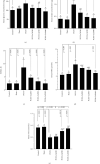
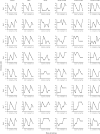
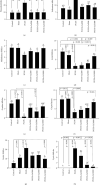
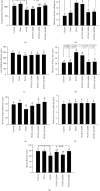
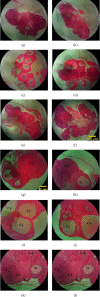
Similar articles
-
Hydroalcoholic extract of flaxseed improves polycystic ovary syndrome in a rat model.Iran J Basic Med Sci. 2018 Jun;21(6):645-650. doi: 10.22038/IJBMS.2018.25778.6349. Iran J Basic Med Sci. 2018. PMID: 29942457 Free PMC article.
-
A combination of spearmint and flaxseed extract improved endocrine and histomorphology of ovary in experimental PCOS.J Ovarian Res. 2020 Mar 20;13(1):32. doi: 10.1186/s13048-020-00633-8. J Ovarian Res. 2020. PMID: 32197626 Free PMC article.
-
The significant improvement in ovarian PCOS syndrome using hydralazine and alendronate aromatase inhibitor FDA-approved drugs in Wistar rat models.Biomed Pharmacother. 2024 May;174:116504. doi: 10.1016/j.biopha.2024.116504. Epub 2024 Mar 29. Biomed Pharmacother. 2024. PMID: 38552442
-
A comprehensive insight into effects of green tea extract in polycystic ovary syndrome: a systematic review.Reprod Biol Endocrinol. 2021 Sep 23;19(1):147. doi: 10.1186/s12958-021-00831-z. Reprod Biol Endocrinol. 2021. PMID: 34551795 Free PMC article.
-
Interactions between androgens, FSH, anti-Müllerian hormone and estradiol during folliculogenesis in the human normal and polycystic ovary.Hum Reprod Update. 2016 Nov;22(6):709-724. doi: 10.1093/humupd/dmw027. Epub 2016 Aug 27. Hum Reprod Update. 2016. PMID: 27566840 Review.
Cited by
-
An Updated Review on the Multifaceted Therapeutic Potential of Calendula officinalis L.Pharmaceuticals (Basel). 2023 Apr 18;16(4):611. doi: 10.3390/ph16040611. Pharmaceuticals (Basel). 2023. PMID: 37111369 Free PMC article. Review.
-
Protective effects of apricot kernel oil and metformin against BPA-induced ovarian toxicity in rat models of polycystic ovary syndrome: insights into PI3K/AKT and mitochondrial apoptosis pathways.Toxicol Res (Camb). 2025 May 25;14(3):tfaf071. doi: 10.1093/toxres/tfaf071. eCollection 2025 Jun. Toxicol Res (Camb). 2025. PMID: 40421425
-
Irpex lacteus polysaccharide exhibits therapeutic potential for ovarian fibrosis in PCOS rats via the TGF-β1/smad pathway.Heliyon. 2023 Jul 27;9(8):e18741. doi: 10.1016/j.heliyon.2023.e18741. eCollection 2023 Aug. Heliyon. 2023. PMID: 37554783 Free PMC article.
-
Exploring the Therapeutic Potential of Natural Products in Polycystic Ovarian Syndrome (PCOS): A Mini-Review of Lipid Profile, Blood Glucose, and Ovarian Histological Improvements.Life (Basel). 2024 Jan 19;14(1):150. doi: 10.3390/life14010150. Life (Basel). 2024. PMID: 38276279 Free PMC article. Review.
-
Administration of adipose-derived mesenchymal stem cell conditioned medium improves ovarian function in polycystic ovary syndrome rats: involvement of epigenetic modifiers system.J Ovarian Res. 2023 Dec 15;16(1):238. doi: 10.1186/s13048-023-01317-9. J Ovarian Res. 2023. PMID: 38102694 Free PMC article.
References
-
- Mannerås-Holm L., Leonhardt H., Kullberg J., et al. Adipose tissue has aberrant morphology and function in PCOS: enlarged adipocytes and low serum adiponectin, but not circulating sex steroids, are strongly associated with insulin resistance. The Journal of Clinical Endocrinology & Metabolism . 2011;96(2):E304–E311. doi: 10.1210/jc.2010-1290. - DOI - PubMed
-
- Paixão L., Ramos R. B., Lavarda A., Morsh D. M., Spritzer P. M. Animal models of hyperandrogenism and ovarian morphology changes as features of polycystic ovary syndrome: a systematic review. Reproductive Biology and Endocrinology . 2017;15(1):p. 12. doi: 10.1186/s12958-017-0231-z. - DOI - PMC - PubMed
MeSH terms
Substances
LinkOut - more resources
Full Text Sources
Medical

